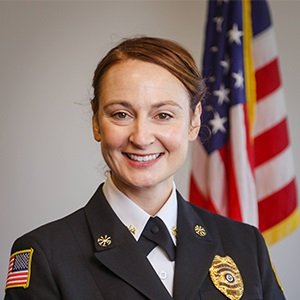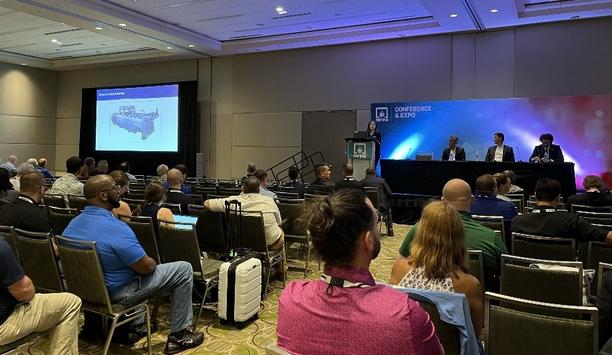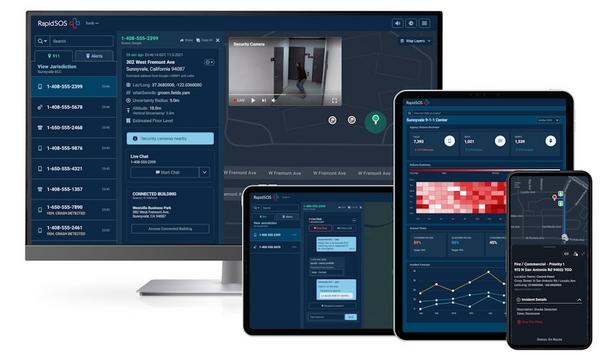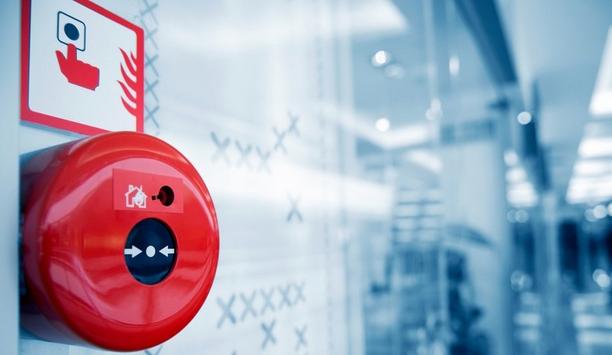Women in Fire was established in the early 1980s. The active organization hosts a yearly conference and provides best-practice resources on topics such as fire station design and maternity policies.
A mentoring program includes an application process for those wishing to be a mentor or a mentee, and a matchmaking program enables mentoring participants to align their career paths and choose someone whom they can relate to. The organization’s latest international conference in Spokane, Wash., in September, provided hands-on training for women firefighters in addition to sessions on topics such as nutrition, fire practice and leadership.
Making fire service better
About 300 people attended the conference, which emphasizes an inclusive atmosphere with men and women. The next conference will be in Orlando, Sept. 21-24, 2022. Women in Fire will also offer a leadership conference April 25 in Indianapolis at the FDIC show.
It’s important to have resources and give voice to groups who would not otherwise have them"
“It’s important to have resources and give voice to groups who would not otherwise have them,” says Amy Hanifan, President of Women in Fire. She was introduced to the organization nine years ago through a fellow class member at the National Fire Academy in Evansburg, Md., who was an organization board member. Considering the low numbers of women in the fire services, the group seeks to “Do what we can as an organization to make the fire service better,” adds Hanifan, who is Operations Chief at the McMinnville Fire Department in Oregon.
Becoming volunteer firefighter
Fire departments often reach out to Women in Fire on topics such as recruiting and retention. “We encourage organizations and help them make their marketing appeal to the applicants they want to attract,” says Hanifan, who became a volunteer firefighter right out of high school and then went on to get an associate degree as a paramedic.
“Young people start considering careers at middle-school age, so it is helpful to sew the seeds early. Some communities will do fire camps or career days, including a little bit of hands-on practice. Some students just need confidence that they can perform the task.” In 2015, women made up about 3.7 percent of career U.S. firefighters, according to the National Fire Protection Association. The percentage of women in the fire service had nearly doubled in the previous 15 years since an earlier study.
Grass-Roots efforts
Women in Fire seek to provide professional resources while paying attention to grass-roots efforts
Women held 12,850 career firefighting roles and 72,250 volunteer roles nationally, averaging 7.3 percent of the U.S. fire service overall, according to the U.S. Fire Department Profile 2015 report. “We recognize a need to update our numbers, and we need more information on how many women are in leadership positions and about people of color in the fire service,” says Hanifan.
Women in Fire seek to provide professional resources while paying attention to grass-roots efforts and working at the grassroots level, says Hanifan. “Overall, there is still a lot of work to be done, although progress has been made. We still hear from people who are just learning about the organization, so we are being intentional about our reach.”
Improve recruitment practices
“We are open to working with organizations seeking to improve their recruitment practices, and we have had training at our conferences,” says Hanifan. “We are making sure we provide good resources and promoting the best equity and inclusion practices.” For example, Women in Fire offers resources on bullying and harassment.
We are making sure we provide good resources and promoting the best equity and inclusion practices"
Women firefighters face reproductive health dangers on the job, including toxic combustion, chemicals that may be absorbed faster by pregnant women, and toxins that are more dangerous to a fetus than to the mother. (Firefighting conditions can impact male reproductive health, too, with a study in Denmark reporting around 50% higher risk of male-factor infertility compared to general workers.)
Intense thermal environment
Other dangers include an intense thermal environment, loud noises, psychological and physical strain, and the weight of full equipment (45 to 75 lbs.) Women firefighters who become pregnant should discuss health issues with their doctors and let them know what they are exposed to on the job, notes Hanifan. There is a wide variation among pregnancy policies at fire departments, and 30% of women report their department has no pregnancy/maternity leave policies, according to the Center for Fire Rescue and EMS Health Research.
What about the challenges for a woman working in the largely all-male environment of a fire station, including long and overnight hours? “Some organizations have separate bunk rooms, while some have more open sleeping quarters,” says Hanifan.
Discussing health issues
When people reach out, we channel them to a resource that could be helpful”
“It depends on the culture of the organization, and some of it is regional/cultural. Some departments don’t have unisex bathrooms, or adequate facilities for everyone.”
“Unfortunately, we hear from women who have had bad experiences, but it’s not always the case,” she adds. “I have been the only female on shift, and I have never felt unsafe. We as an organization speak to the impact of those situations and provide training that addresses the topic. When people reach out, we channel them to a resource that could be helpful.”
Good career path
Ill-fitting protective equipment is another challenge for women in the fire service, and Women in Fire is in the final stages of instituting a grant project with Florida State University to review the gear kit for firefighters. Much of the equipment is made for a certain build of firefighter, and it’s not one-size-fits-all.
Rather than focus on the challenges of being a woman firefighter, Hanifan says she prefers to focus on the positive. “I keep my perspective on what I can do to make it better,” she says. “We need to keep showing drive and change to conversation to how can we ensure we have a good career path, education, a mentor and the resources we need. Everyone has to make hard choices.” Women in Fire seeks to be a part of that new conversation.








































